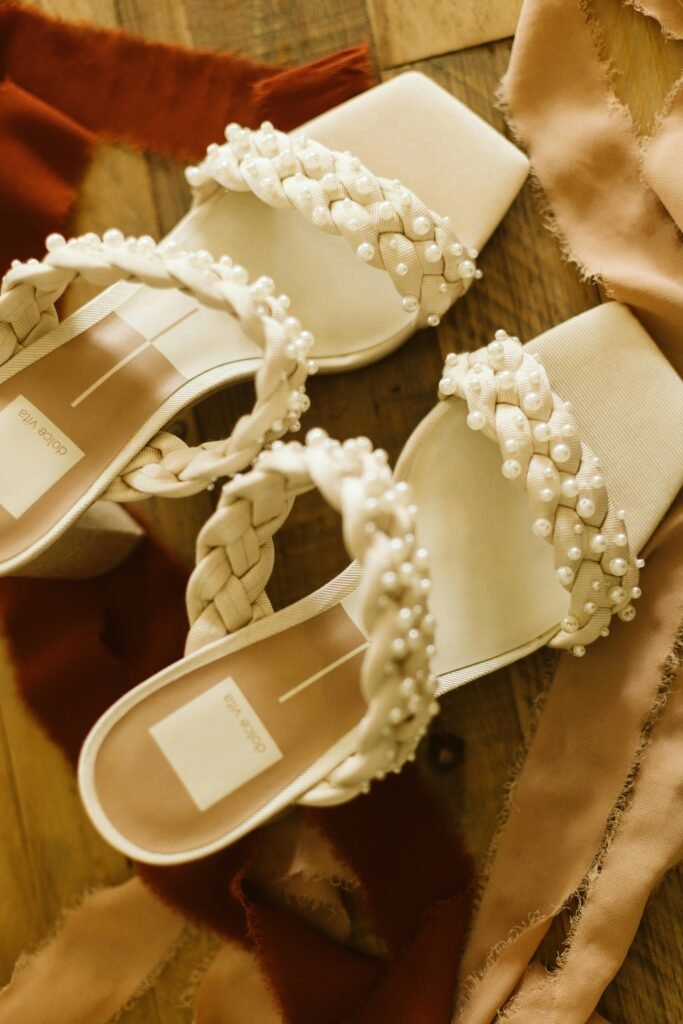When it comes to sizing and fitting string bracelets, there are several factors to consider to ensure the perfect fit. From the type of string used, to the desired snugness on your wrist, finding the right fit can enhance both the comfort and style of your bracelet. This article will explore some key considerations to keep in mind when determining the sizing and fitting of string bracelets, helping you make the best choice for your wrist.

This image is property of images.pexels.com.
Material
Types of materials for string bracelets
When it comes to string bracelets, there are various materials to choose from. Nylon, polyester, cotton, and silk are popular options. Nylon is known for its strength and durability, making it a suitable choice for those who lead an active lifestyle. Polyester is another durable material that is resistant to fading and stretching. Cotton, on the other hand, offers a softer and more natural feel against the skin. Silk is a luxurious option that adds an elegant touch to any outfit.
Durability of different materials
The durability of string bracelets can vary depending on the material used. Nylon and polyester are generally more durable and can withstand everyday wear and tear without losing their shape or color. Cotton bracelets, while comfortable, may not be as durable and may require more frequent replacement. Silk bracelets, while delicate, can still last a long time if cared for properly. It’s important to consider your lifestyle and activities when choosing a material that can withstand your daily routine.
Comfort of different materials
Comfort is a crucial factor to consider when selecting a string bracelet material. Nylon and polyester bracelets may not offer the same level of comfort as cotton or silk due to their synthetic nature. Cotton bracelets are lightweight and breathable, making them comfortable to wear for extended periods. Silk bracelets provide a smooth and luxurious feel against the skin, perfect for those who value comfort. Consider your personal preference for texture and feel when choosing a material that will keep you comfortable throughout the day.
Size Options
Standard sizes for string bracelets
String bracelets typically come in standard sizes to accommodate a range of wrist sizes. Standard sizes usually include small, medium, and large. Small bracelets are typically around 6-6.5 inches in circumference and are suitable for smaller wrist sizes. Medium bracelets fall within the range of 6.5-7 inches and are considered the average size for most individuals. Large bracelets typically measure 7-7.5 inches and are designed for those with larger wrists. These standard sizes serve as a starting point when determining the right fit for your wrist.
Adjustable size options
If you prefer a more customizable fit, adjustable string bracelets are a great option. These bracelets often feature sliding knots or adjustable closures that allow you to change the size according to your preference. These adjustable options are ideal for individuals who want the flexibility to wear their bracelet at different points along the wrist or for those who enjoy stacking their bracelets. Adjustable bracelets can provide a comfortable fit, regardless of your wrist size.
Customizable sizes
For those who require a more precise fit, many online retailers or local jewelry shops offer customizable sizes. This option allows you to provide your wrist measurements, ensuring a bracelet that fits you perfectly. Customizable sizes are particularly useful if you have a wrist size that falls outside the standard range or if you prefer a specific fit. Keep in mind that custom sizing may require additional time and cost, but it ensures a bracelet that is tailored to your wrist.

This image is property of images.pexels.com.
Measurement
Measuring wrist size accurately
To measure your wrist accurately, you’ll need a flexible tape measure or a piece of string and a ruler. Begin by wrapping the tape measure or string around your wrist just below the wrist bone. Make sure it’s snug but not too tight or loose. If using a string, mark the measurement with a pen and then measure the marked section against a ruler. The resulting measurement is your wrist size.
Calculating length of string bracelet
Once you have determined your wrist size, you can calculate the length of the string bracelet you’ll need. Generally, the length of a string bracelet is slightly longer than the wearer’s wrist size to account for the knots and closure. To calculate the bracelet length, add about 0.5-1 inch to your wrist size measurement. This additional length ensures that the bracelet is not too tight when fastened.
Accounting for additional length for knots and closure
When measuring for a string bracelet, it’s crucial to account for the additional length needed for knots and closures. The type of closure you choose will determine how much extra length is required. If you opt for a knot closure, additional length must be factored in for the knots themselves. Similarly, if the bracelet has a clasp or toggle closure, a bit of extra length is needed to secure the bracelet when fastened. Be sure to consider the type of closure and add the necessary length to ensure a comfortable fit without compromising the bracelet’s wearability.
Style and Design
Choosing a suitable style of string bracelet
String bracelets come in a wide array of styles, ranging from simple and minimalist designs to more intricate and decorative options. Consider your personal style and preferences when choosing a suitable bracelet style. If you prefer a minimalistic look, opt for a plain string bracelet without any embellishments. On the other hand, if you prefer a bolder statement piece, choose a bracelet with beads, charms, or intricate woven patterns. Selecting a style that aligns with your taste will make the bracelet feel more personal and reflective of your individual style.
Considerations for different designs
When considering different designs for your string bracelet, factor in their practicality and versatility. Certain designs may be more suitable for everyday wear, while others may be better suited for special occasions or formal events. For everyday wear, consider a simpler and more subtle design that can easily complement a variety of outfits. If you’re looking for a bracelet to wear to more formal events, consider selecting a design with delicate details or incorporating precious stones or metals. Choosing a design that matches your lifestyle and occasions will ensure that you get the most wear out of your bracelet.
Matching the bracelet with personal preferences and outfits
One of the great things about string bracelets is that they can be easily mixed and matched with your personal style and outfits. Consider the colors, patterns, or materials that you gravitate towards when selecting a bracelet that complements your wardrobe. If you have a particular color scheme in your wardrobe, choose a bracelet that incorporates those colors. Alternatively, you may prefer a bracelet that stands out and adds a pop of contrasting color to your outfits. Ultimately, selecting a bracelet that matches your personal preferences and outfits will make it a versatile and cherished accessory in your collection.

This image is property of images.pexels.com.
Closure
Different types of closures for string bracelets
String bracelets can be fastened using various closure options. Some of the common closure types for string bracelets include knots, clasps, toggles, and adjustable sliding knots. Knot closures are simple and require tying the string ends together, making them a popular choice for casual bracelets. Clasps and toggles offer more secure closures, making them suitable for bracelets that are worn frequently. Adjustable sliding knots allow for a customizable fit and are often seen in adjustable string bracelets.
Ease of use for different closures
The ease of use for different closures can vary depending on personal preference and dexterity. Knot closures are generally straightforward and easy to adjust. Clasps and toggles may require a bit more dexterity to fasten, but they provide a secure closure. Adjustable sliding knots may require some practice to get the desired fit, but once mastered, they offer convenience and ease of adjustment. Consider your comfort and convenience when choosing a closure option that suits your lifestyle and ease of use.
Security of closures
Security is an important aspect to consider when selecting a closure for your string bracelet. Knot closures may not be as secure as clasps or toggles, as they can potentially come undone with excessive movement. Clasps and toggles, on the other hand, provide a more reliable and secure closure that won’t easily come undone. Adjustable sliding knots can also offer a secure closure, but it’s important to ensure that the knots are tightly secured to prevent any slippage. If security is a top priority, opt for a closure option that provides the necessary peace of mind.
Knots
Understanding different knot options
When it comes to string bracelets, different knot options can be used to create unique and decorative designs. Some popular knot options include the square knot, the macrame knot, and the slip knot. The square knot is a simple and versatile knot that creates a symmetrical pattern. The macrame knot is more intricate and can be used to create intricate patterns and designs. The slip knot is commonly used in adjustable bracelets, allowing for easy resizing by sliding the knots along the string.
Considerations for different knot styles
When selecting a knot style for your string bracelet, consider both the aesthetics and functionality of the knot. The square knot is a classic option that works well for both casual and formal bracelets. The macrame knot adds an intricate and bohemian touch to the bracelet, perfect for those who prefer a more decorative design. The slip knot is ideal for adjustable bracelets, allowing for easy resizing and versatility. Choose a knot style that appeals to your taste and fits the overall design and purpose of the bracelet.
Ensuring secure knots
To ensure that your string bracelet remains intact and secure, it’s important to tie the knots tightly and with care. Make sure to pull the ends of the strings firmly while tying the knots to prevent any slippage. It’s also a good idea to add a small dab of clear nail polish or jewelry glue to the knots to secure them further. This extra step can help prevent any accidental untying or loosening of the knots, ensuring that your bracelet remains securely fastened.
Comfort and Wearability
Evaluating overall comfort of the bracelet
Comfort is essential when it comes to choosing a string bracelet. Consider the thickness and flexibility of the string when evaluating the overall comfort of the bracelet. Thicker strings may feel bulkier and less comfortable, especially when worn alongside other bracelets. Opt for a thinner string that offers flexibility and moves comfortably with your wrist. Additionally, if the bracelet has any embellishments or charms, ensure that they are securely attached and do not cause any discomfort or irritation.
Considerations for daily wear
For those planning to wear their string bracelet every day, it’s important to select a style and design that can withstand daily wear and tear. Consider bracelets made from durable materials like nylon or polyester, as they are more resistant to fading and stretching. Also, keep in mind the versatility of the bracelet. Choose a style that complements a wide range of outfits and occasions, allowing you to seamlessly incorporate it into your daily wardrobe.
Choosing a suitable thickness for the string
The thickness of the string can greatly impact the comfort and wearability of the bracelet. Thicker strings may feel heavier on the wrist and can be less comfortable, especially when stacked with other bracelets. Opt for a thinner string that provides flexibility and lightness. Thin strings are typically more comfortable to wear for extended periods and offer a more delicate and elegant look. However, keep in mind that the thickness of the string should also be proportionate to the overall design and purpose of the bracelet.
Maintenance
Cleaning and caring for string bracelets
String bracelets are relatively low-maintenance, but it’s still important to clean and care for them properly to ensure their longevity. To clean your string bracelet, gently wash it with mild soap and water. Avoid using harsh chemicals or abrasive materials that might damage the string. After cleaning, make sure to thoroughly rinse and pat dry the bracelet. When not in use, store the bracelet in a clean and dry place, away from direct sunlight.
Avoiding damage and fraying
To prevent damage and fraying, it’s important to avoid exposing your string bracelet to excessive pulling or stretching. Be mindful when putting on or taking off the bracelet to avoid any unnecessary strain on the string. Additionally, avoid wearing the bracelet during activities that may cause excessive friction or snagging, such as sports or manual labor. Regularly inspect the bracelet for any signs of wear or fraying, and address any issues promptly to prevent further damage.
Repair options for damaged bracelets
In the event that your string bracelet gets damaged, there are several repair options available. If you notice any fraying or loose threads, you can trim them carefully with a pair of sharp scissors. For more extensive damage, such as a broken clasp or significant fraying, it may be best to take the bracelet to a professional jeweler or a local repair shop. They will have the necessary tools and expertise to repair or replace any damaged components, ensuring that your bracelet can be worn again.
Bracelet Purpose
Determining the purpose of the bracelet
Before selecting a string bracelet, it’s important to determine its purpose. Are you looking for a casual everyday accessory or a more formal piece for special occasions? Understanding the purpose of the bracelet will help you determine the appropriate style, design, and material. For everyday wear, opt for a simple and versatile bracelet that can be easily incorporated into your daily outfits. If you’re looking for a formal bracelet, consider designs with more intricate details or incorporate precious metals and gemstones.
Considerations for casual or formal wear
For casual wear, consider bracelets that are comfortable, durable, and easily adjustable. These bracelets should be versatile enough to complement a range of casual outfits. Casual bracelets often feature simple designs or subtle embellishments, allowing them to be worn effortlessly. For formal wear, opt for bracelets that are more elegant and sophisticated. These bracelets may incorporate precious stones, intricate metalwork, or be made from more luxurious materials like silk. The style and design should align with the formality of the occasion and complement your formal attire.
Gifting or personal use
When choosing a string bracelet, it’s important to consider whether it is intended as a gift or for personal use. If you’re selecting a bracelet as a gift, take into consideration the recipient’s personal style and preferences. Think about their favorite colors or the types of jewelry they typically wear. Consider whether they would prefer a more subtle and minimalistic design or a statement piece that stands out. Choosing a bracelet that aligns with their taste and style will make it a meaningful and cherished gift.
Price and Budget
Setting a budget for the bracelet
Before embarking on your search for the perfect string bracelet, it’s important to establish a budget. Determine the amount you are willing to spend on the bracelet, considering your personal financial situation and priorities. Setting a budget will help narrow down your options and prevent you from overspending. Keep in mind that the price of the bracelet can vary depending on factors such as the material, design, brand, and additional features.
Considering the cost-effectiveness of different options
When evaluating the cost-effectiveness of different string bracelet options, consider the quality and durability of the materials used. While some options may be more affordable upfront, they may not withstand everyday wear or maintain their appearance over time. Investing in a higher-quality bracelet made from durable materials may be more cost-effective in the long run, as it will last longer and require less frequent replacements. Additionally, consider the overall value and enjoyment you will derive from the bracelet when assessing its cost-effectiveness.
Balancing quality and affordability
Finding the right balance between quality and affordability is essential when purchasing a string bracelet. It’s important to choose a bracelet that fits within your budget without compromising on quality or durability. Research different brands and read customer reviews to gauge the quality of their products. Look for options that offer a good balance between price and quality, ensuring that you get a bracelet that meets your expectations while staying within your budget. Remember, a well-made and thoughtfully chosen bracelet can provide lasting value and enjoyment for years to come.
